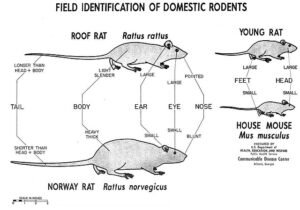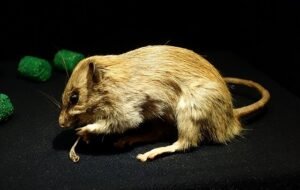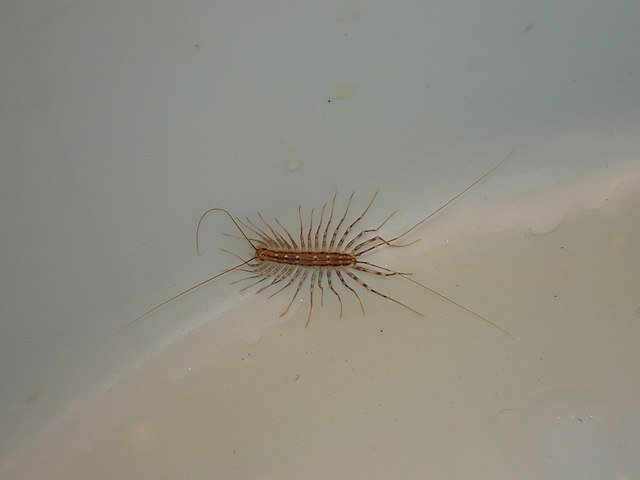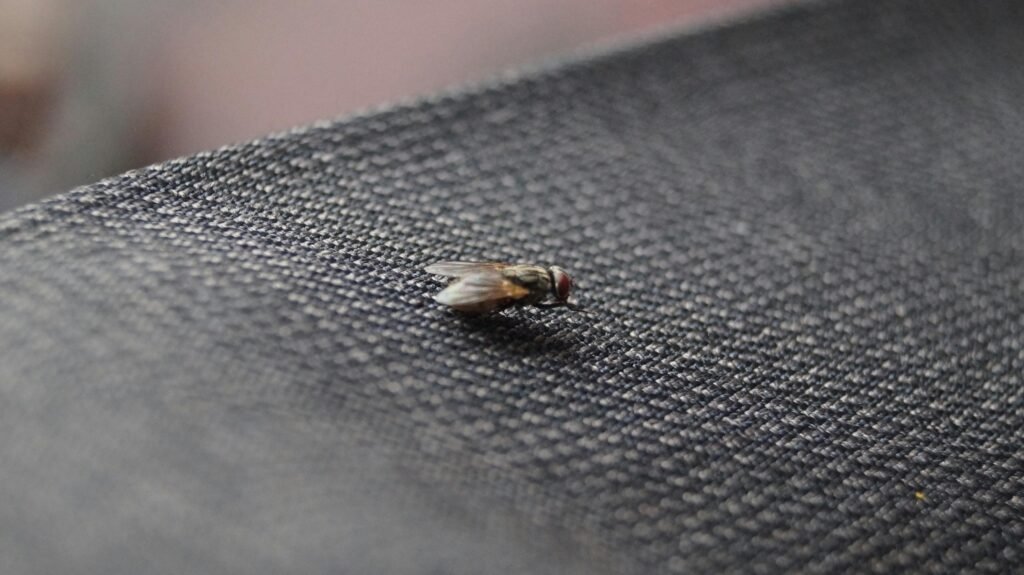Roof Rats: Identification, Risks, and Complete Control Guide
 The roof rat (Rattus rattus) is one of the most widespread commensal rodents worldwide. Sometimes called the black rat, ship rat, or house rat, this species has traveled with humans for centuries, thriving wherever food and shelter are available. Much bigger than house mouse , unlike the Norway rat (Rattus norvegicus), which prefers burrows and lower levels of buildings, roof rats are skilled climbers and often establish colonies in attics, trees, and upper parts of structures.
The roof rat (Rattus rattus) is one of the most widespread commensal rodents worldwide. Sometimes called the black rat, ship rat, or house rat, this species has traveled with humans for centuries, thriving wherever food and shelter are available. Much bigger than house mouse , unlike the Norway rat (Rattus norvegicus), which prefers burrows and lower levels of buildings, roof rats are skilled climbers and often establish colonies in attics, trees, and upper parts of structures.
Although smaller and sleeker than their Norway rat cousins, roof rats are no less destructive. They chew wires, contaminate food, spread parasites, and transmit dangerous pathogens. Their ability to climb, hide, and reproduce quickly makes them one of the hardest urban pests to manage.
This article provides a complete overview of roof rats—from identification and biology to global distribution, risks, cultural history, and the latest control strategies.
Identification
Roof rats are often confused with other rodents, so proper identification is crucial:
Size: Adults measure 16–20 cm (6–8 inches) in body length, with tails often longer than the body (19–25 cm / 7–10 inches).
Weight: Typically 150–250 g (5–9 oz), lighter than Norway rats.
Color: Usually black, dark brown, or slate gray with lighter underbellies.
Build: Sleek and slender, with a pointed nose, large eyes, and large ears that can be pulled over the eyes.
Tail: Scaly, hairless, and longer than the combined head-and-body length—one of the best distinguishing features.
Key difference from Norway rats: Roof rats are slimmer with larger ears and longer tails, while Norway rats are bulkier, with smaller ears and shorter tails.
Biology and Ecology
 Roof rats belong to the order Rodentia and family Muridae. Their biology supports survival in urban and rural environments:
Roof rats belong to the order Rodentia and family Muridae. Their biology supports survival in urban and rural environments:
Reproduction: Females can produce 4–6 litters per year, with 6–8 pups per litter. Sexual maturity occurs in just 2–3 months, leading to explosive population growth.
Diet: Omnivorous but prefers fruits, seeds, nuts, and grains. Known to raid citrus trees, bird feeders, and stored food. They will also eat insects, snails, or even small birds if needed.
Behavior: Primarily nocturnal, with activity peaks just after sunset and before sunrise.
Habitat: Excellent climbers, nesting in rafters, attics, trees, dense vegetation, and even utility poles.
Lifespan: In the wild, 9–12 months on average, but up to 2 years in protected environments.
Roof rats are cautious and neophobic, meaning they avoid new objects for several days—making trapping more difficult.
Global Distribution
Rattus rattus has one of the widest distributions of any mammal, second only to humans.
Origin: Believed to have originated in tropical Asia.
Spread: Carried on ships, they colonized Europe, Africa, the Americas, and Oceania centuries ago.
Present day: Found in warm coastal regions worldwide. In the United States, roof rats are most common in the southeast, Gulf Coast, and Pacific coast states. They are rare in colder climates but thrive indoors if heating is available.
Urban environments: Frequently associated with ports, warehouses, and densely populated neighborhoods.
Their climbing ability allows them to exploit habitats unavailable to Norway rats, often resulting in overlapping but distinct colonies.
Risks and Damage
Roof rats pose serious health and structural risks:
Health Concerns
Disease transmission: Carriers of salmonellosis, leptospirosis, rat-bite fever, toxoplasmosis, and historically associated with plague (Yersinia pestis) spread via fleas.
Parasites: Hosts of fleas, mites, and ticks, which can transmit diseases to humans and pets.
Food contamination: Urine and droppings can contaminate stored grains, fruits, and packaged foods.
Structural and Economic Damage
Chewing: Constant gnawing damages electrical wiring (fire risk), insulation, PVC pipes, and wooden structures.
Crops: Cause extensive damage to orchards, nut groves, and stored agricultural produce.
Stored products: Infest grain silos, warehouses, and food storage facilities.
The economic cost of rat infestations globally is measured in billions annually.
Signs of Infestation
Detecting roof rats early is critical for control:
Droppings: Small (12–14 mm), spindle-shaped with pointed ends.
Gnaw marks: On wires, wood, or food packaging.
Tracks and rub marks: Greasy streaks along walls, beams, or pipes.
Noises: Scratching, scurrying, or squeaking, especially in ceilings or attics at night.
Nests: Built from shredded material, often found in attics, dense ivy, or palm trees.
Sightings: Rats seen climbing fences, trees, or utility wires are often roof rats.
Control Methods
Successful management requires an integrated approach:
1. Sanitation
Remove fallen fruits, nuts, and pet food.
Keep garbage tightly sealed.
Eliminate water sources such as bird baths or leaky pipes.
2. Exclusion
Seal openings larger than 1.25 cm (½ inch).
Use metal mesh, steel wool, or cement—not foam, which rats chew through.
Trim tree branches at least 1.5 m (5 ft) away from roofs.
3. Trapping
Snap traps or electronic traps placed along walls, rafters, or attic beams.
Use attractive baits: peanut butter, nuts, fruits, or dried pet food.
Place multiple traps due to high populations.
4. Rodenticides
Anticoagulant baits (where legally permitted) in tamper-resistant bait stations.
Use cautiously—risks to pets, children, and non-target wildlife.
Rotate active ingredients to avoid bait shyness.
Advanced Approaches
For severe infestations, professional pest management may employ:
Tracking powders: Toxic dust applied in inaccessible areas (regulated use).
CO₂ or dry ice fumigation: Used in burrows, effective but requires permits.
Rodent-proofing design: Architectural adjustments such as rodent guards on utility lines.
Ecosystem approach: Installing owl boxes to encourage predators like barn owls (Tyto alba).
Remote monitoring: Smart traps connected via Wi-Fi, alerting technicians instantly.
Integrated Pest Management (IPM) combining sanitation, exclusion, and targeted lethal control offers the best long-term solution.
Cultural and Historical Context
The roof rat has played a significant role in human history:
Plague carrier: Alongside fleas (Ctenocephalides felis, Xenopsylla cheopis), roof rats (Rattus rattus) were central players in some of the deadliest pandemics in history. In the 6th century, the Plague of Justinian (541–750 AD) devastated the Byzantine Empire, killing soldiers and civilians alike, and historians believe it weakened Emperor Justinian’s attempt to reconquer the Western Roman territories, while indirectly paving the way for the later rise of Islamic powers. In the 14th century, the Black Death (1347–1351) swept across Europe, wiping out up to 50% of the population. The result was a collapse of feudal systems, severe labor shortages, and the eventual reshaping of European society, laying groundwork for the Renaissance. Centuries later, the so-called Third Pandemic of plague (from 1855 onward) began in China and spread via international trade routes to cities like Hong Kong, Bombay, and San Francisco, causing tens of millions of deaths. This crisis weakened parts of Asia and gave Western colonial powers new opportunities to dominate global trade and port systems. Without exaggeration, roof rats and their fleas did not just spread disease—they altered wars, toppled empires, and reshaped the course of world history.
Seafaring history: Known as the ship rat, they were notorious stowaways, damaging food supplies on voyages.
Folklore: In many cultures, rats symbolize both cunning survival and disease. In contrast, in parts of India, rats are considered sacred in certain temples.
Modern perception: While often vilified, their adaptability makes them a scientific model for studying animal behavior and pest ecology.
FAQ: Roof Rats
1. What attracts roof rats to homes?
Food (fruits, nuts, pet food), water sources, and accessible entry points like attic vents or tree branches.
2. Are roof rats dangerous to humans?
Yes. They spread diseases, carry parasites, and contaminate food supplies.
3. How do roof rats differ from Norway rats?
Roof rats are slimmer, with longer tails and larger ears. Norway rats are heavier and more ground-dwelling.
4. Can roof rats climb walls?
Absolutely. They are excellent climbers and often enter through roofs, vines, and overhanging branches.
5. What is the best bait for roof rats?
Peanut butter, fruits, nuts, or dried pet food work well. Fresh fruits like oranges are highly attractive.
6. Do ultrasonic repellents work against roof rats?
Evidence is weak. They may deter temporarily, but roof rats quickly adapt. Exclusion and trapping are more reliable.
7. How quickly can a roof rat infestation grow?
With multiple litters per year and short maturity cycles, populations can double in just a few months if unchecked.
8. Should I hire a professional for roof rats?
Yes, especially for large infestations. Professionals use advanced tools and ensure safety for people, pets, and wildlife.
Final Thoughts
The roof rat (Rattus rattus) is one of the most challenging urban pests to control. Its climbing ability, rapid reproduction, and adaptability allow it to thrive in homes, warehouses, farms, and coastal cities around the world. While small numbers may go unnoticed, unchecked infestations can quickly spiral into major health and economic problems.
For homeowners, the key to success lies in a multi-layered strategy: strict sanitation, exclusion of entry points, smart placement of traps, and—where necessary—professional pest control. Agricultural and commercial facilities face even higher stakes, requiring monitoring systems, bait station networks, and in some cases ecological approaches such as predator encouragement.
Roof rats remind us that pest management is not just about elimination—it’s about prevention, vigilance, and sustainable practices. Whether you are protecting a single-family home or a food storage facility, understanding the biology and behavior of these rodents gives you the advantage in keeping them out for good.
Disclaimer
This article is for informational purposes only. Pest control laws and approved chemicals vary by country. For best results and legal safety, we strongly recommend contacting a licensed pest control professional in your local area. Always make sure that the pest control technician is properly certified or licensed, depending on your country’s regulations. It’s important to confirm that they only use approved products and apply them exactly as instructed on the product label. In most places in Europe, UK, or USA, following label directions is not just best practice—it’s the law.
Author Bio
Nasos Iliopoulos, BSc Agronomist & Certified Pest Control Expert
Scientific Director – Advance Services (Athens, Greece)
Licensed Pest Control Business – Ministry of Rural Development & Food (GR)


